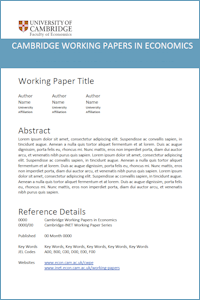
Donato A. Melchiorre and Sinan Küfeoğlu
Economic Assessment of Using Electric Vehicles and Batteries as Domestic Storage Units in the United Kingdom
CWPE1858
Abstract: Increasing residential renewable energy generation and the consumers’ demand for reducing their electricity bills leads to new opportunities to use electric vehicles (EVs) and batteries as domestic storage units. This paper assesses the economic feasibility of Vehicle-to-Home (V2H) and domestic battery systems in the United Kingdom (UK). To do the analysis, a UK average EV and domestic battery have been established; called UKEV and UKBat respectively. The UKEV characteristics were determined by taking a weighted average from the five highest selling EVs in the UK. An arithmetic mean was used for the individual UKBat features based on seven models currently available on the UK market. The UKEV and UKBat were compared under four scenarios. These are Ofgem’s two domestic electricity profile classes (PC1, PC2) and two existing time-of-use tariffs; one with two and the other with three rates during a day. Maximum annual saving for the consumer was estimated to be around 35% and 57% per annual electricity bill for the EV and battery, respectively. On average, for both UKEV and UKBat, the three-rate tariff yielded 30% more savings than the two-rate tariff. Battery degradation cost was the major parameter affecting the economic feasibility of V2H and domestic batteries, but these costs are expected to continue to fall. Suitable time-of-use tariff design is the key to maximising consumers’ savings in using these units.
Keywords: electric vehicles, battery, vehicle-to-home systems, tariffs
JEL Codes: L94
Author links:
PDF: https://www.econ.cam.ac.uk/research-files/repec/cam/pdf/cwpe1858.pdf 
EPRG Paper Link: 1830
Open Access Link: https://doi.org/10.17863/CAM.33794
